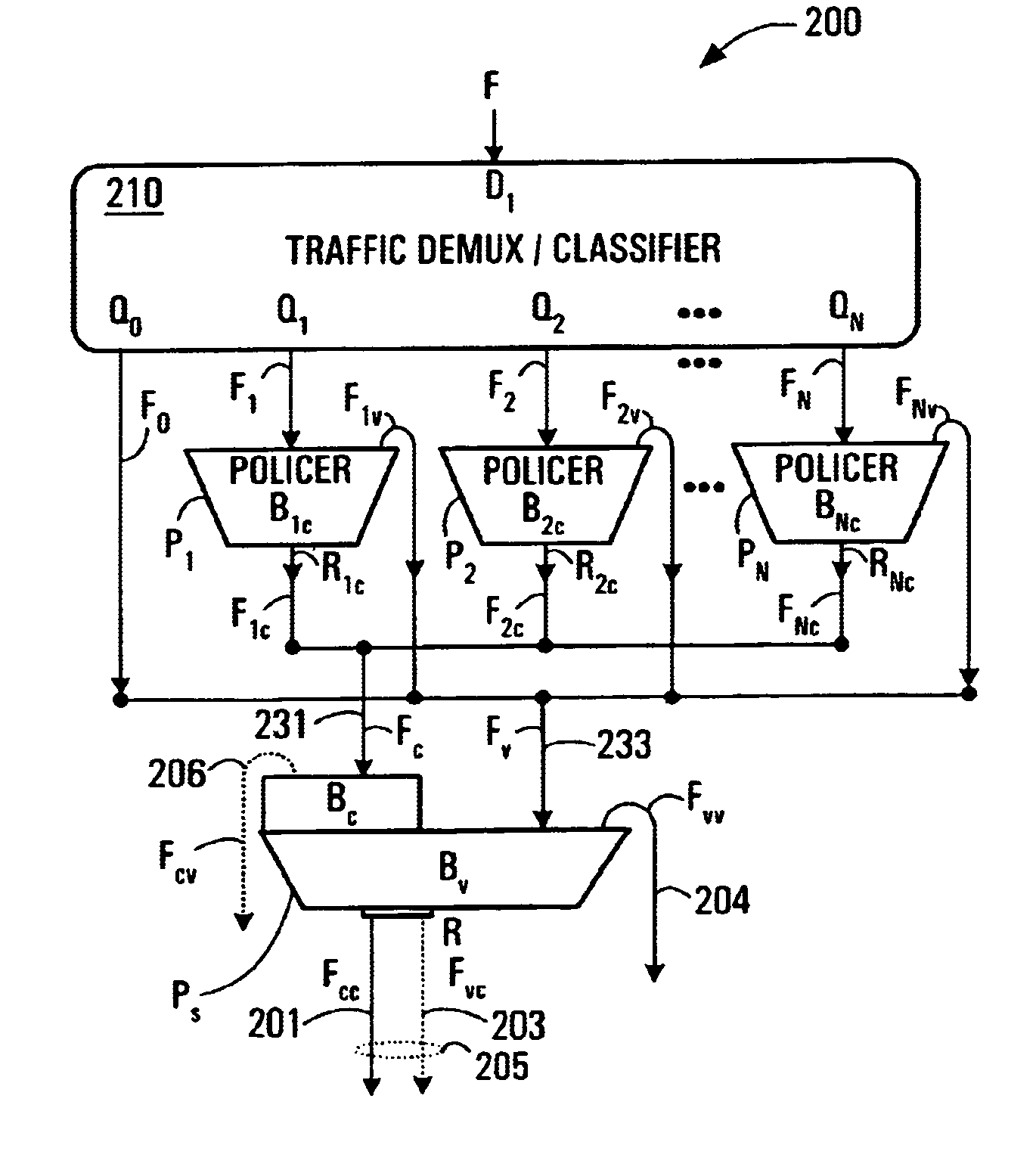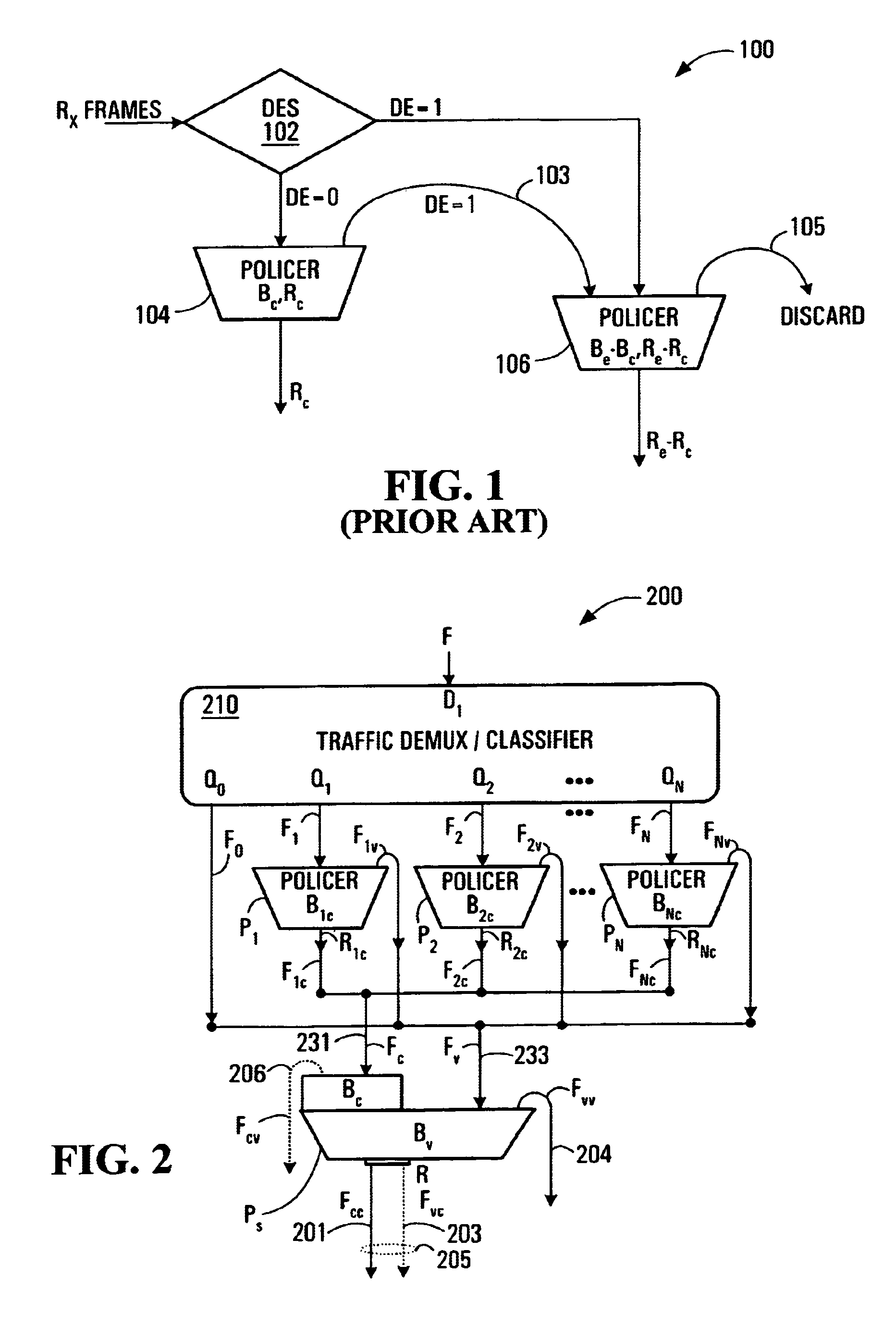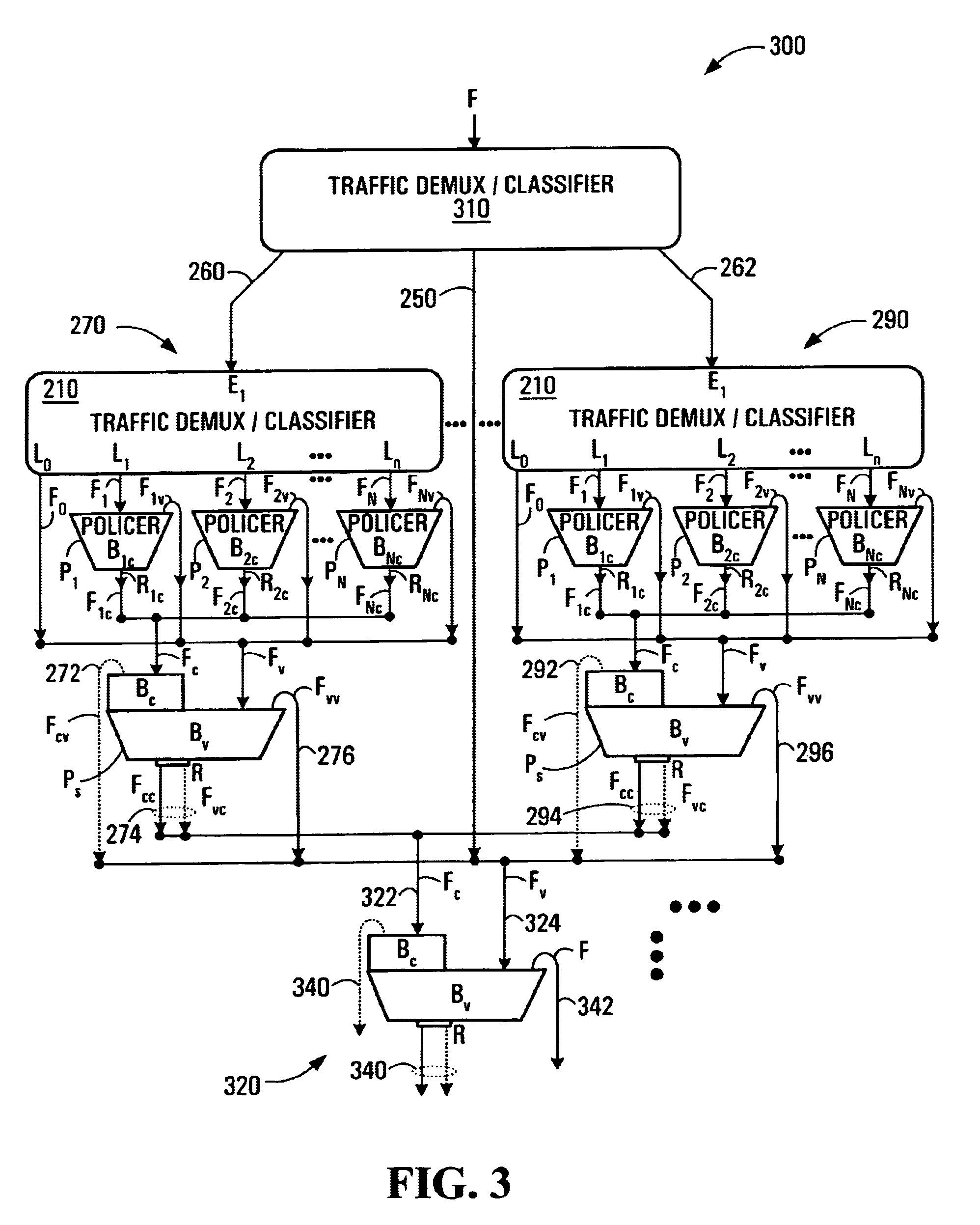Multi-flow multi-level leaky bucket policer
a bucket policer and multi-flow technology, applied in the field of digital communication networks, can solve the problems of difficult to fairly enforce traffic control at both the micro-flow and the macro-flow levels simultaneously, the traffic shaper does not have the ability to increase, and the conventional traffic policer is usually very restrictiv
- Summary
- Abstract
- Description
- Claims
- Application Information
AI Technical Summary
Benefits of technology
Problems solved by technology
Method used
Image
Examples
Embodiment Construction
[0051]Referring now to FIG. 2, shown is a Two-Stage Multi-Flow (TSMF) Leaky Bucket Policer 200 according to a first embodiment of the invention. The TSMF Leaky Bucket Policer 200 has a demultiplexer / classifier 210. The demultiplexer / classifier classifies incoming packets according to an implementation specific scheme. For IP traffic, there are different classes / types of traffic, for example voice, e-mail, video, etc., and the demultiplexing might be based on this. Encrypted traffic may include a DiffServ code point (DFCP) and / or PT (protocol type) and / or other fields of the IP packet which enable a determination of packet type. The demultiplexer / classifier 210 might look at these fields in packets in order to perform classification and demultiplexing. Each packet may be classified as a function of a logical channel it came in on. The demultiplexer / classifier 210 has an input D1 coupled to accept an input traffic flow F that may be a macro-flow. A macro-flow might, for example, be al...
PUM
 Login to View More
Login to View More Abstract
Description
Claims
Application Information
 Login to View More
Login to View More - R&D
- Intellectual Property
- Life Sciences
- Materials
- Tech Scout
- Unparalleled Data Quality
- Higher Quality Content
- 60% Fewer Hallucinations
Browse by: Latest US Patents, China's latest patents, Technical Efficacy Thesaurus, Application Domain, Technology Topic, Popular Technical Reports.
© 2025 PatSnap. All rights reserved.Legal|Privacy policy|Modern Slavery Act Transparency Statement|Sitemap|About US| Contact US: help@patsnap.com



